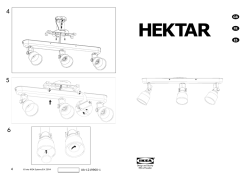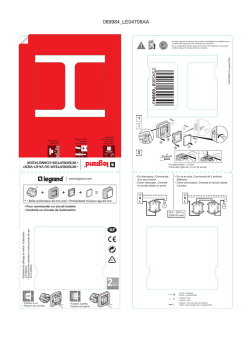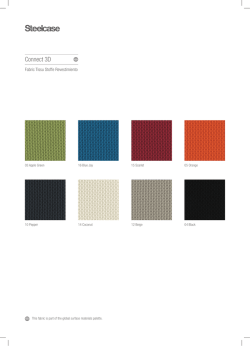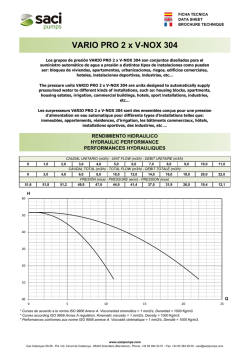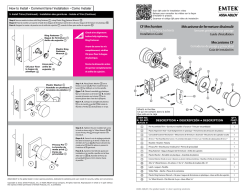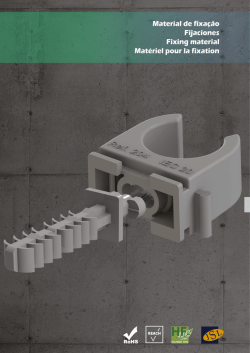
Print Date: 18.03.2015 09:20:15 | Printed b y: Benjamin Matt
# 20043 # 20041 # 20044 # 20040 # 20042 Operating/Instructions The flat edge at the front of the grip facilitates accurate positioning for driving the fastener. Hold the grip firmly and calmly when driving the fastener. The fastener is driven best with alternate heavy and light blows with a hammer. The harder the base material is the shorter should be the fastener. If there is thick and rough plastering, the fastener should be longerthan used for a papered wall. The max. loading if used properly in good base material is 20 kig. Don’t use on reinforced concrete harder than the B15 grade. Mount the plastic cap/hook by hand. Printed: 30.03.2015 | Doc-Nr: PUB / 5222382 / 000 / 00 # 20045 Anwenderhinweise/Handhabung Die abgeflachte Kante vorne am Griff erlaubt ein genaues Anvisieren des Punktes, wo der Bolzen eingeschlagen werden soll. Griff beim Einschlagen des Bolzens fest und ruhig halten. Der Bolzen wird optimal in die Wand eingetrieben durch wiederholten Schlag mit dem Hammer stark-schwach. Je Härter der Untergrund, umso kürzer der Bolzen. Dicker und grober Verputz bedingt einen längeren Bolzen. Maximale Tragkraft bei richtiger Anwendung und auf optimalem Untergrund: 20kg. Nicht anwendbar auf Stahlbeton härter als B15. Plastikkappen/-bügel von Hand aufsetzen. Directives/d’utilisation Le méplat à l’avant de la poignée permet de viser exactement le point où le clou doit être enfoncé. Tenir fermement, tranquillement, la poignée pour enfoncer le clou. Pour bien l’enfoncer dans le mur, taper 2 fois un grand coup, puis un petit coup de marteau. Plus le support est dur, plus le clou doit être court. Dans du crépi épais et rugueux, il est nécessaire de choisir un clou plus long que dans un murtapissé. Capacité de charge maximale en cas d’utilisantion correcte, dans le bon support: 20kg. Le clou ne peut pas être utilisé dans du béton armé de résistance supérieure à B15. Placer les capuchons/étriers en plastique à la main. Instrucciones de Manejo La parte delantera del mango, siendo plana, facilita la fijación. Posicionar de forma precisa el clavo antes de realizar la fijación. Sujetar el mango firme y calmadamente cuando se está realizando la fijación. Para una mejor calidad de fijación se aconseja combinar golpes de martillo fuertes y ligeros. Cuando más duro es el material base a penetrar más corto debe de ser el clavo/perno. Si sobre el material base hay una capa de enfoscado de yeso, el clavo/perno utilizado debe ser más largo que el que se usa en pared normal. La carga máxima que está fijación puede soportar cuando se usa correctamente en un buen material base es 20 Kg. No utilizar este tipo de fijación en hormigón armado con una resistencia superior a 15 N/mm2 (Hormigón B15). 284945 05.06 # 20039 Print Date: 18.03.2015 09:20:15 | Printed by: Benjamin Matt | Document-Nr: OTH / 2677 / 000 / 00 | ECM: 001000002677 | Comme 284945 19.05.2006
© Copyright 2026

